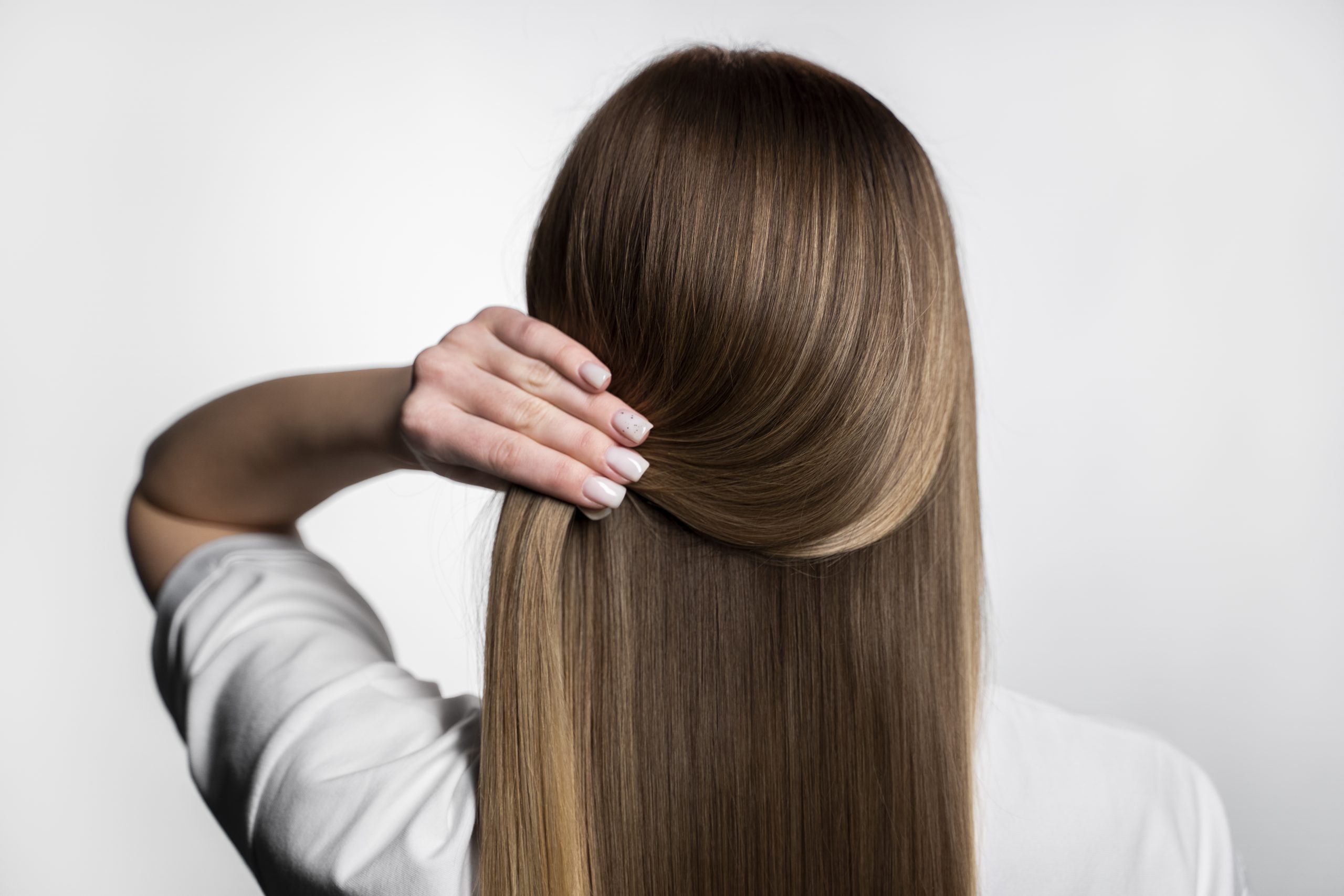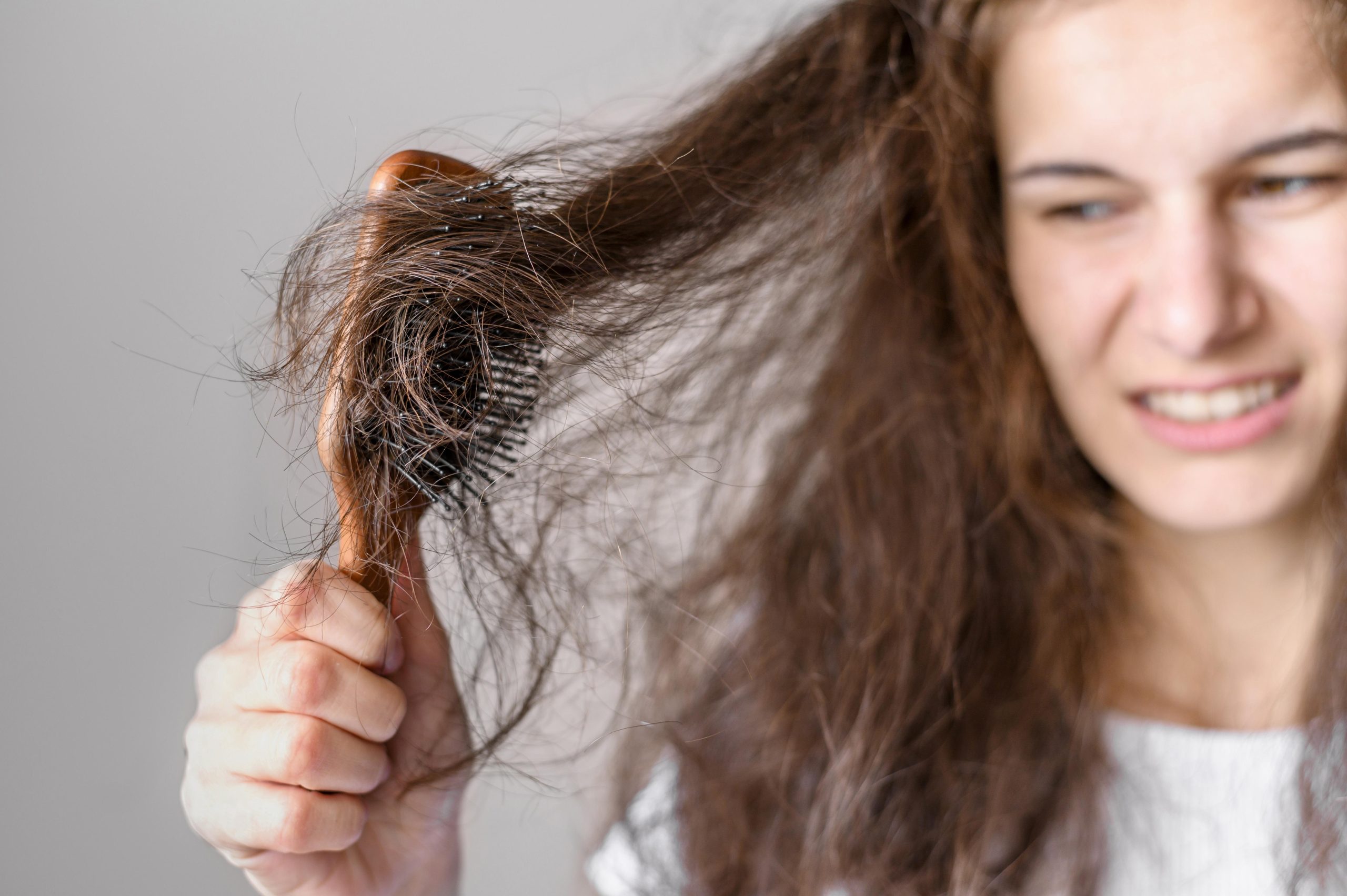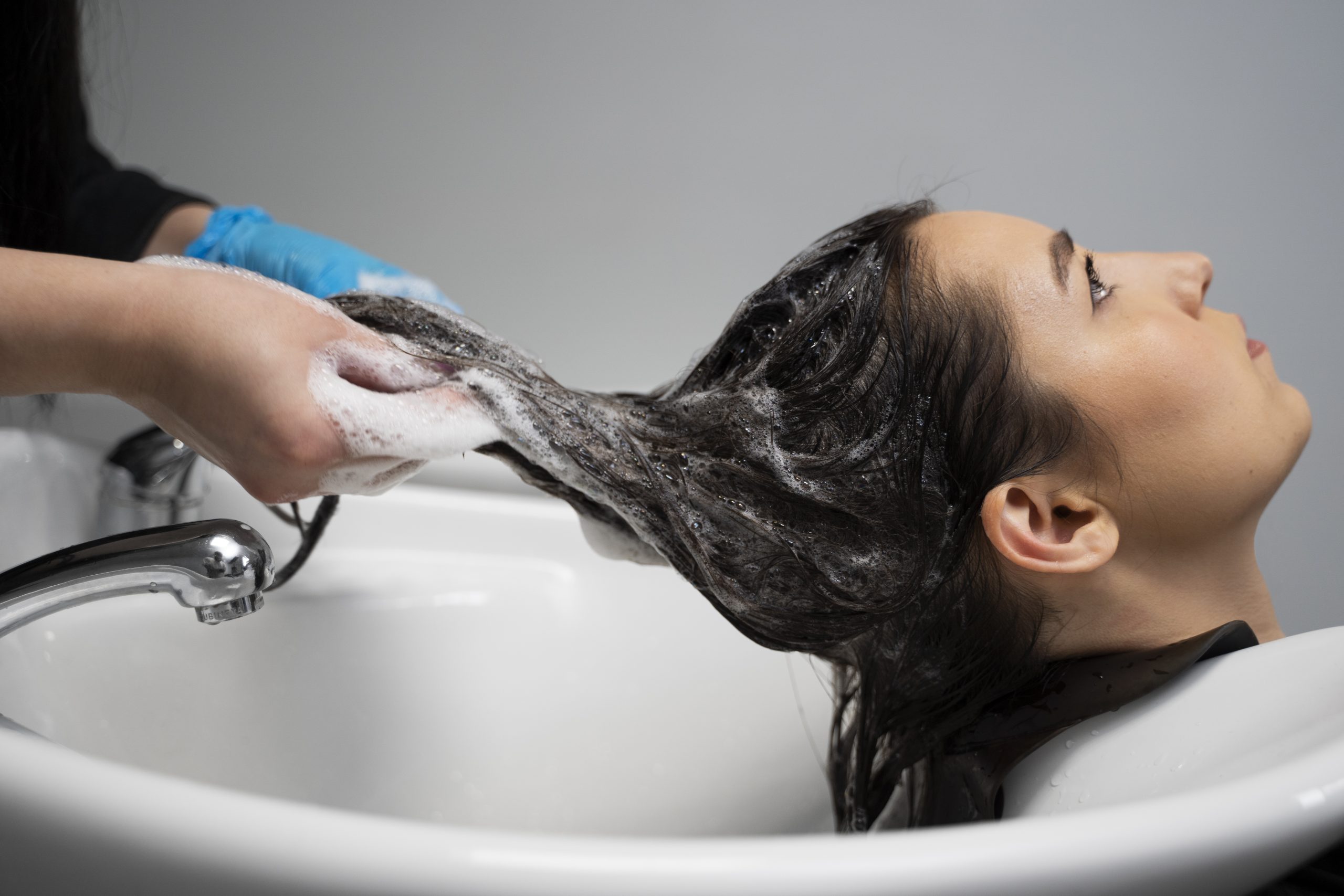Table of Contents
Choosing the Right Hair Treatment for Frizzy Hair: Safety Tips and Ingredients
- 2 November 2023

Dealing with frizzy hair is not just about cosmetics; it’s about regaining your confidence and feeling great about your hair. The first step in this journey is to understand what causes frizzy hair and why choosing the right treatment is so crucial.
Understanding Frizzy Hair
Frizz occurs when the hair’s outer layer, the cuticle, is raised, allowing moisture to pass through and swell the strands. Various factors contribute to this phenomenon. Humidity, for instance, is a common foe for frizzy hair. When the air is humid, it has a higher moisture content, which causes the hair to absorb it, resulting in frizz.
Another major contributor is hair type. Different hair types have varying degrees of susceptibility to frizz. People with naturally curly or wavy hair are more prone to frizz because their hair structure is more porous.
But there’s more to the story. Using the wrong hair care products can exacerbate the problem. Harsh shampoos, overuse of heat styling tools, and chemicals in some hair treatments can all lead to frizzy hair.
Safety Tips for Hair Treatments
Let’s talk about the safety aspect of choosing a hair treatment. Safety should be a top priority, as the wrong treatment can damage your hair and scalp. Here are some safety tips to consider:
- Patch Testing: Always perform a patch test before using any new hair treatment. Apply a small amount of the product to a discreet area, like the inside of your wrist or behind your ear, and wait 24-48 hours to see if you experience any adverse reactions. This simple step can help you avoid potential allergic reactions.
- Ingredient Awareness: It’s crucial to be aware of the ingredients in your chosen hair treatment. Some ingredients may be unsuitable for your hair type or may cause allergies. If you have specific allergies, ensure that the product is free from those substances.
- Allergic Reactions: Be vigilant for signs of allergic reactions such as itching, redness, or swelling when you apply a new treatment. If you experience any of these symptoms, discontinue use immediately.
- Seek Professional Advice: If you’re unsure about a particular treatment or have a history of severe allergies, it’s wise to consult a professional, like a dermatologist or a trichologist, before using any product.
Ingredients to Look For
Let’s explore the ingredients you should look for when choosing a hair treatment to combat frizz effectively:
- Argan Oil: Argan oil is a star player in the world of hair care. It’s rich in essential fatty acids and vitamin E, which help to moisturize and nourish your hair. When used in hair treatments, it can leave your hair feeling silky smooth and frizz-free.
- Coconut Oil: Known for its deep-conditioning properties, coconut oil can work wonders in taming frizzy hair. It helps lock in moisture, reduces protein loss, and promotes smoother, more manageable hair.
- Shea Butter: Shea butter is an excellent natural emollient, providing deep hydration to your hair. It also helps in sealing the hair cuticles, reducing frizz, and leaving your hair looking sleek and healthy.
- Glycerin: Glycerin is a humectant that attracts and retains moisture in your hair. By preventing your hair from drying out, it minimizes frizz and promotes a glossy, well-hydrated appearance.
- Keratin: Keratin is a protein naturally found in your hair. Using a treatment that contains keratin can help strengthen your hair, making it smoother and more resistant to frizz.
- Aloe Vera: Aloe vera is not only soothing for your skin but also for your hair. It promotes hydration, reduces frizz, and can provide relief if you have an irritated scalp.
- Hyaluronic Acid: Often associated with skincare, hyaluronic acid can also benefit your hair. It aids in locking in moisture, making your hair smoother and less prone to frizz.
- Protein Treatments: Depending on your hair type, protein treatments can be beneficial. They help repair damaged hair, reduce frizz, and improve the overall texture.
Ingredients to Avoid
It’s equally important to steer clear of certain ingredients that can worsen your frizz problem. Here are some to be cautious of:
- Sulfates: Sulfates, such as sodium lauryl sulfate, are common in many shampoos and hair products. They can strip your hair of natural oils, leading to dryness and increased frizz.
- Parabens: Parabens are preservatives used in many cosmetics and hair products. They have raised concerns about potential health risks and may be best avoided.
- Alcohol: Alcohol-based products can be drying to your hair, making it more susceptible to frizz. Look for “alcohol-free” options.
- Formaldehyde: Some hair-straightening treatments contain formaldehyde, a harsh chemical that can have adverse health effects. These treatments should be used with caution.
Choosing the Right Treatment
Now that you’re well-informed about the ingredients to look for and avoid, the next step is choosing the right hair treatment. Here’s a simple guide to help you decide:
Identify Your Hair Type: Understand your hair type, whether it’s curly, wavy, straight, or somewhere in between. The ideal treatment for frizz control may vary based on your hair type.
Consider Your Specific Needs: Do you need a treatment that also provides color protection, heat protection, or extra hydration? Choose a product that aligns with your specific needs.
Read Reviews and Ask for Recommendations: Real-world experiences matter. Read online reviews and ask friends or family for recommendations on effective frizz control products they’ve used.
Patch Test: Remember the importance of the patch test as mentioned earlier. Even if a product comes highly recommended, always perform a patch test to check for allergies or adverse reactions.
Consult a Professional: If you’re uncertain or have special concerns about your hair and scalp, consider seeking advice from a hair professional, such as a dermatologist or trichologist.
Understanding the underlying causes of frizz, being aware of the ingredients that can either help or harm, and knowing how to select the right treatment are the keys to your journey. With these tools, you can confidently embark on a path to frizz-free, manageable, and stunning hair.
It’s also important to remember that there’s no one-size-fits-all solution for every hair type. Your hair is unique, and so are your needs. What works for one person may not work for another. This is why it’s crucial to consider your hair type, specific requirements, and consult professionals when in doubt.
Related Articles

Daily Hair Treatment: Pros, Cons, and Best Practices
When it comes to hair, we all desire luscious locks that exude health and vitality. After all, our hair often serves as a reflection of

Aftercare Guides For Anti-Frizz Hair Treatment
Frizzy hair can be a daily struggle, but anti-frizz hair treatments promise a smooth, manageable mane. If you’ve recently undergone such a treatment, congratulations! You’ve

From Thinning to Thriving: How Shiseido Sublimic Restores Confidence in Women
Hair thinning is a common concern that affects countless individuals, often accompanied by emotional distress and a loss of self-confidence. However, in the journey from
